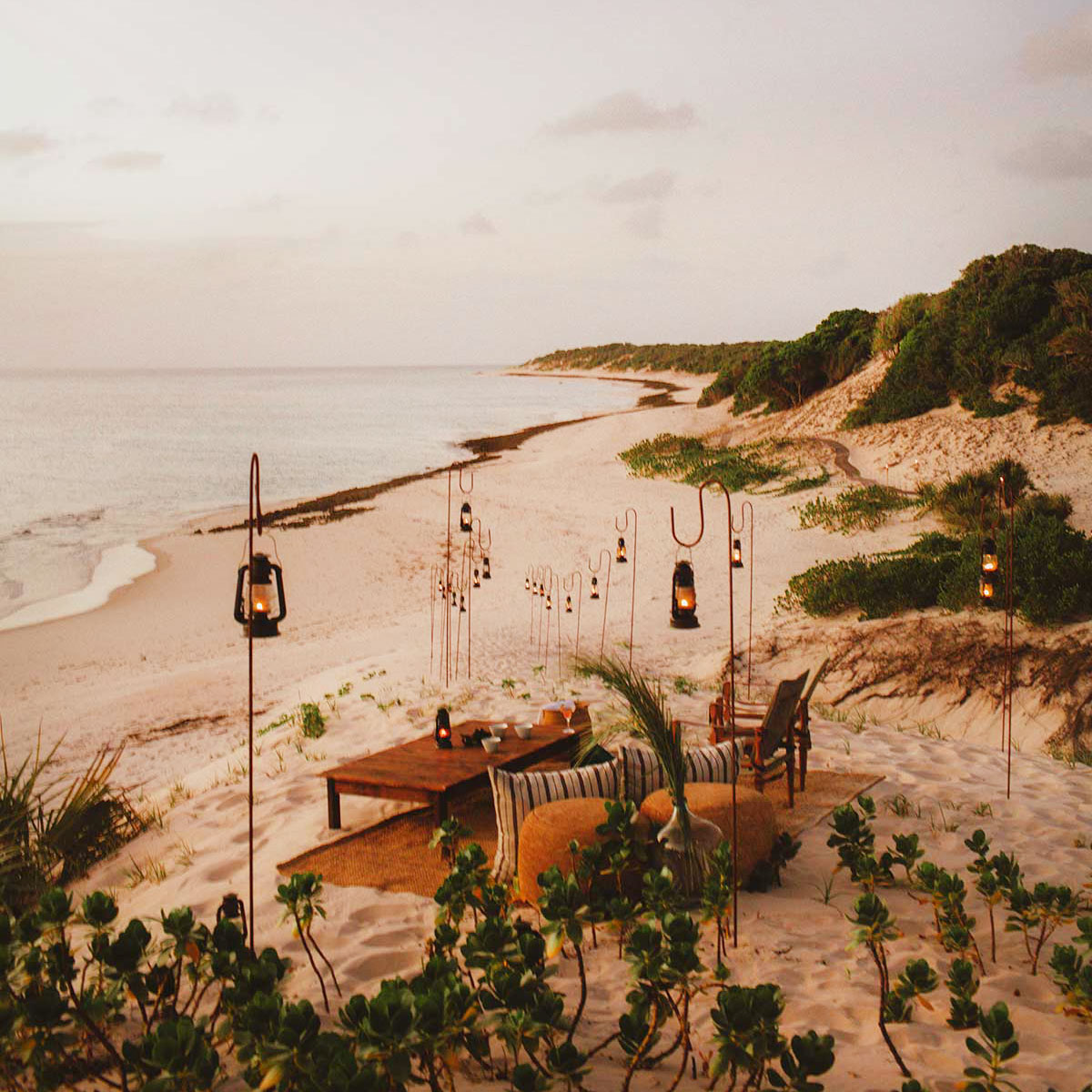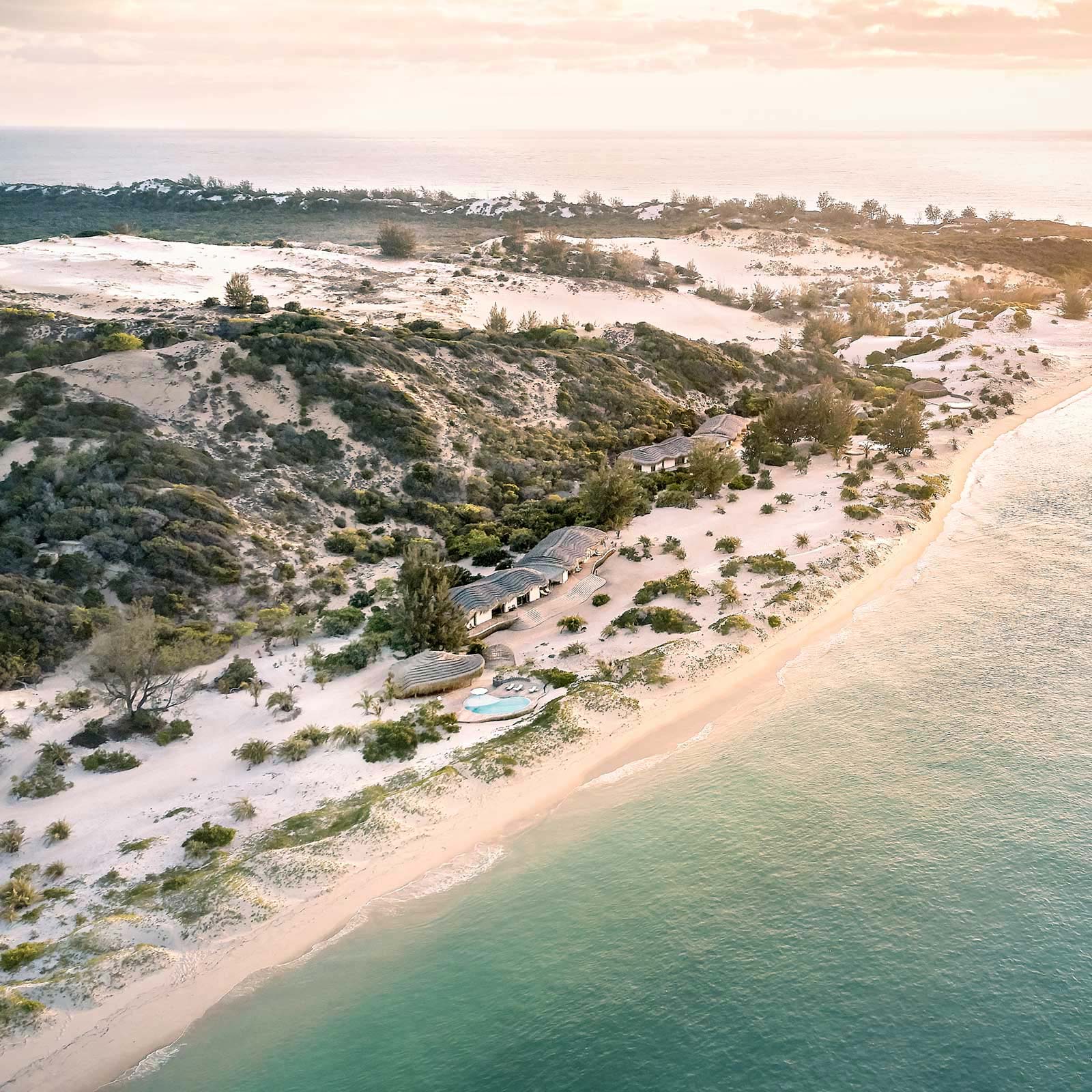
Most hotels in Mozambique look out over the savanna and its elephants. On a tiny island off the south coast of the country, Kisawa Sanctuary has chosen a different view: the unspoiled beaches of a marine observatory.
By Manon Tomzig
Journalist and travel writer, Tablet contributor
Book Kisawa Sanctuary on Tablet Hotels.
With just a few thatched roofs nestled on the sand, Kisawa Sanctuary blends into the vegetation like an animal camouflaged in its environment. And not just any environment: a 300-hectare oceanfront reserve encompassing forests, beaches, and dunes on Benguerra Island, 14km from mainland Mozambique. Unlike the standard African safari, the goal here is to see a Big Five of a seafaring sort: the cetaceans, elasmobranchs, reptiles, sirenians, and bony fish of the Western Indian Ocean.
It all started when Princess Nina Flohr, wife of Prince Philippos of Greece and Denmark, fell in love with the sublime nature of the Bazaruto archipelago and decided to create a natural sanctuary there. A marine observatory. And Kisawa Sanctuary, a modest-seeming base camp that conceals a level of comfort, service, and privacy worthy of a palace.
Ultra-luxury is a welcome side effect of the primary mission: creating a window onto the ocean, like access to the aquatic savanna. The surrounding waters are home to some of the richest and least explored subtropical ecosystems in the Indian Ocean. In 2017, Nina Flohr’s team worked on creating the Bazaruto Center for Scientific Studies, encompassing Africa’s first permanent ocean observatory. In one year, the team collected data on 13,000 animals, recorded 1,600 hours of sound, and collected nearly 2.5 tons of marine debris.
Kisawa, its partner hotel, opened four years later.
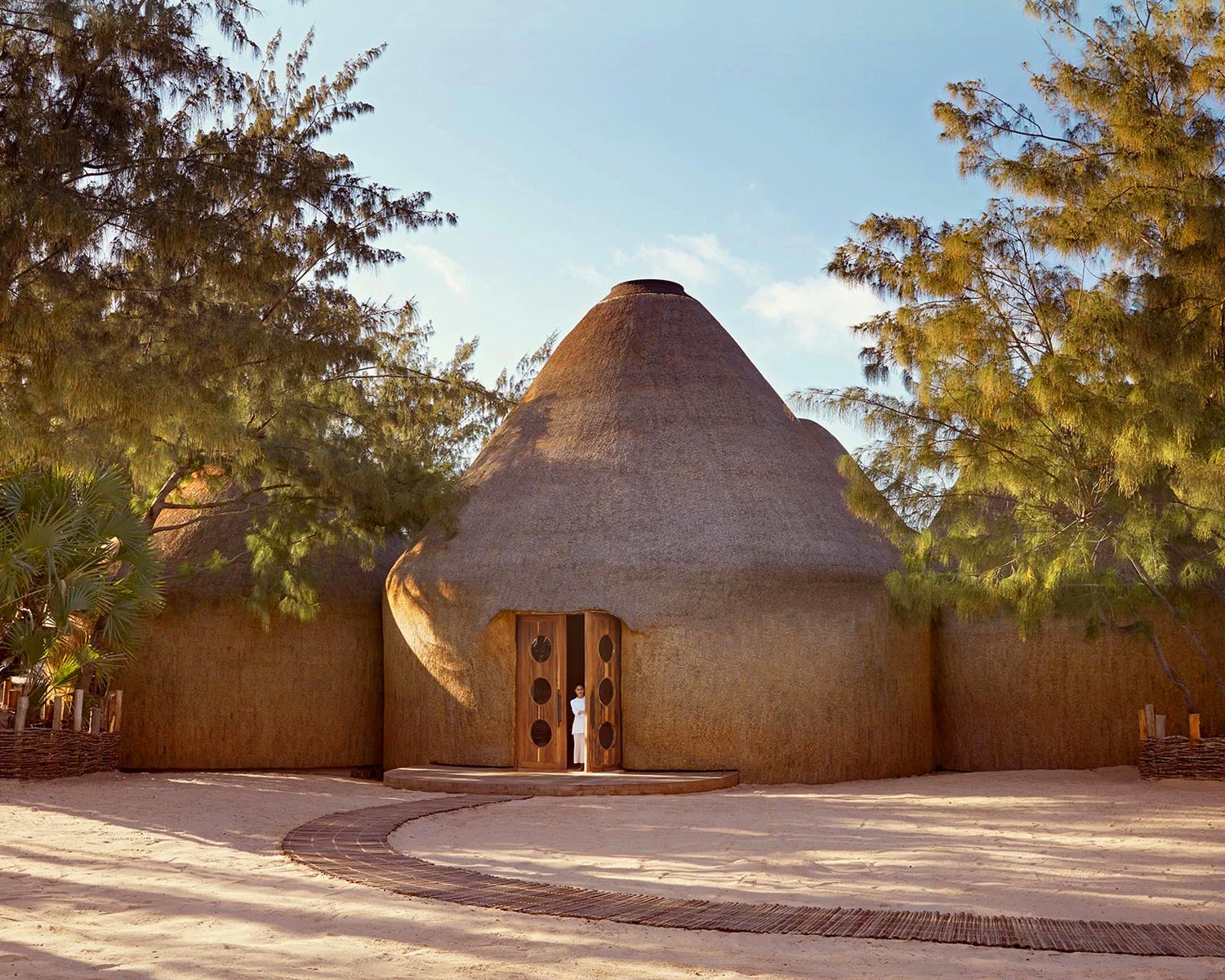
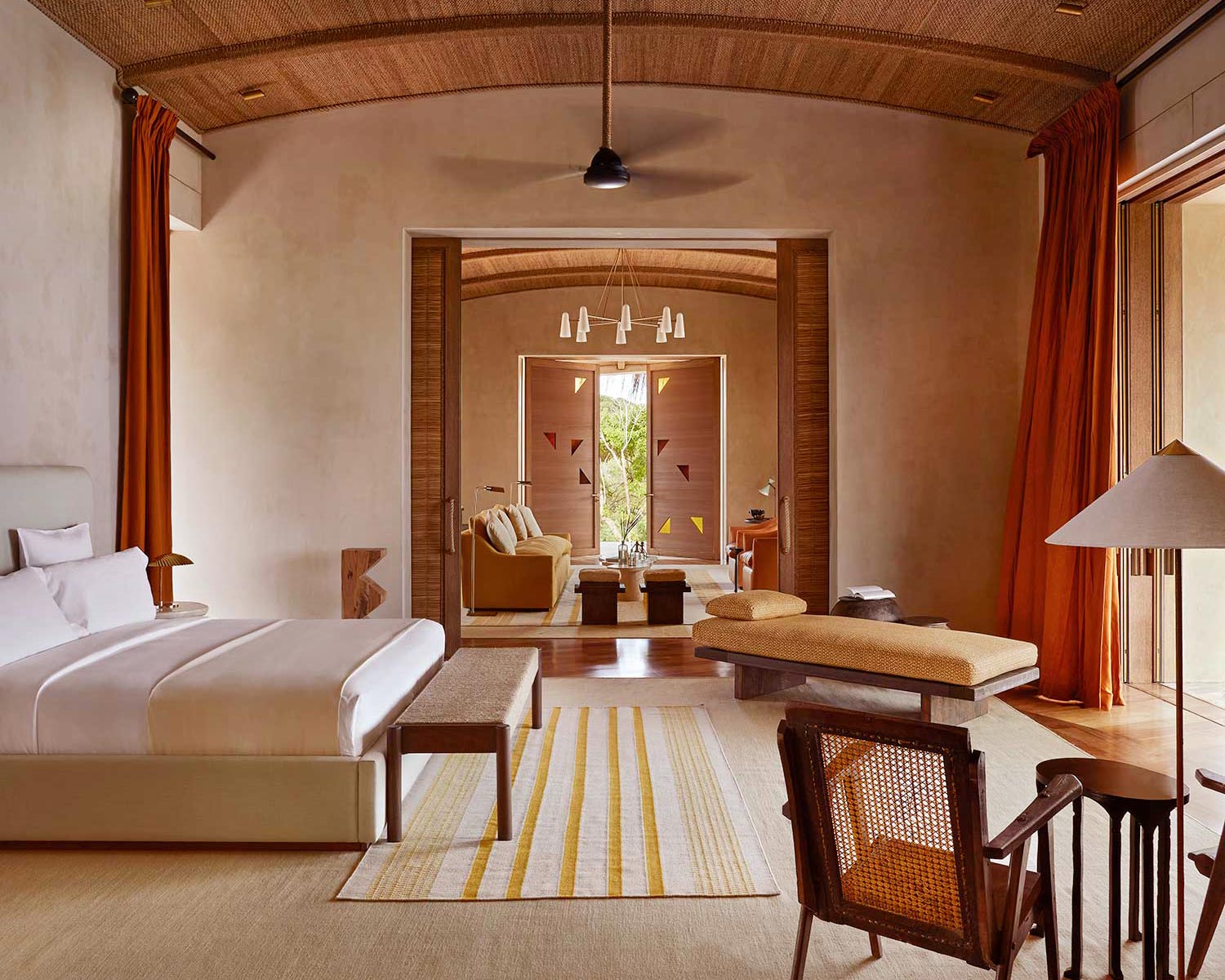
Since then, both entities have operated in harmony: guests are invited to participate in research activities to observe marine life, collect data, and take part in scientific expeditions. Visitors can encounter seven species of dolphins, various turtles, the endangered dugong, and witness the migration of humpback whales.
Preserving the terrestrial environment was equally fundamental during the creation of the Kisawa Sanctuary. “Careful decisions have been made to protect the surrounding nature by blending in, rather than disrupting the local landscape and using handmade over mass-produced items,” explains Nazik Amrani, Kisawa’s general manager. The hotel thus commissioned artisans from Benguerra and neighboring islands and used local heritage techniques such as thatched roofing, carpentry, and weaving, a traditional art on the island, giving the buildings their unique textured, undulating, and biophilic forms. For the interior design, the furniture was custom-made locally or sourced from across Africa, such as the clay pots made by the Nupe tribe in Nigeria or the carved chairs crafted by the Makonde people in Tanzania.
But it’s for its design innovations that the hotel has primarily made a name for itself since its opening.
“In Nina’s many years of traveling throughout Africa, she rarely encountered a country so humble and rooted in tradition but also so innovative and embracing of new ideas as Mozambique,” says Amrani. Kisawa is one of the first hotels to use innovative techniques such as 3D printing technology. The team used sand and saltwater from the island, a natural mortar that provides an alternative to concrete, as a building material. This was then fed into a patented 3D sand printing technology to create decorative structures and cladding. Another innovative technique based on non-toxic recycled coating materials was used to create the entire road network of the hotel. These innovations allow Kisawa to blend seamlessly into the oceanfront landscape.
Scroll down for a full FAQ about Kisawa Sanctuary.

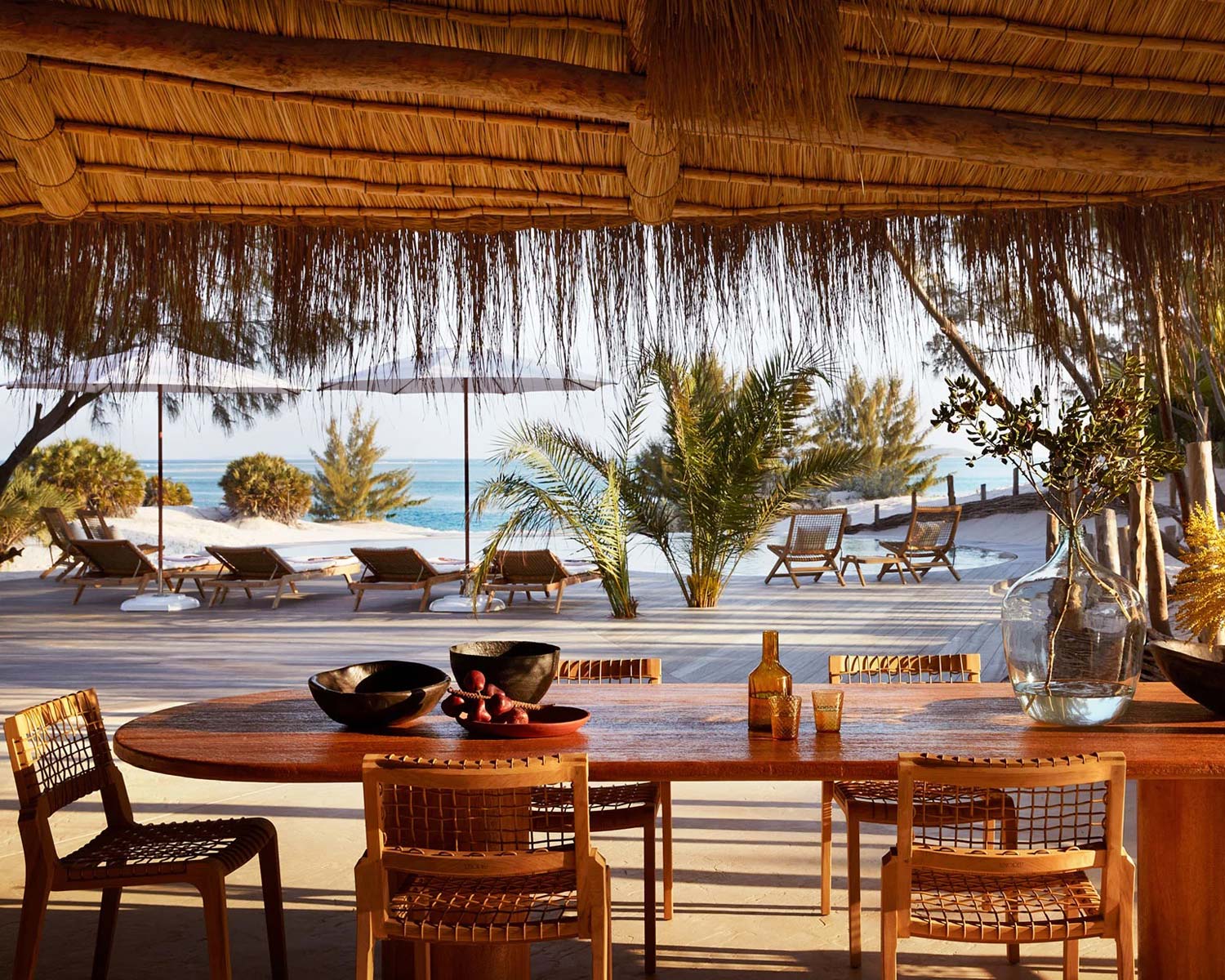
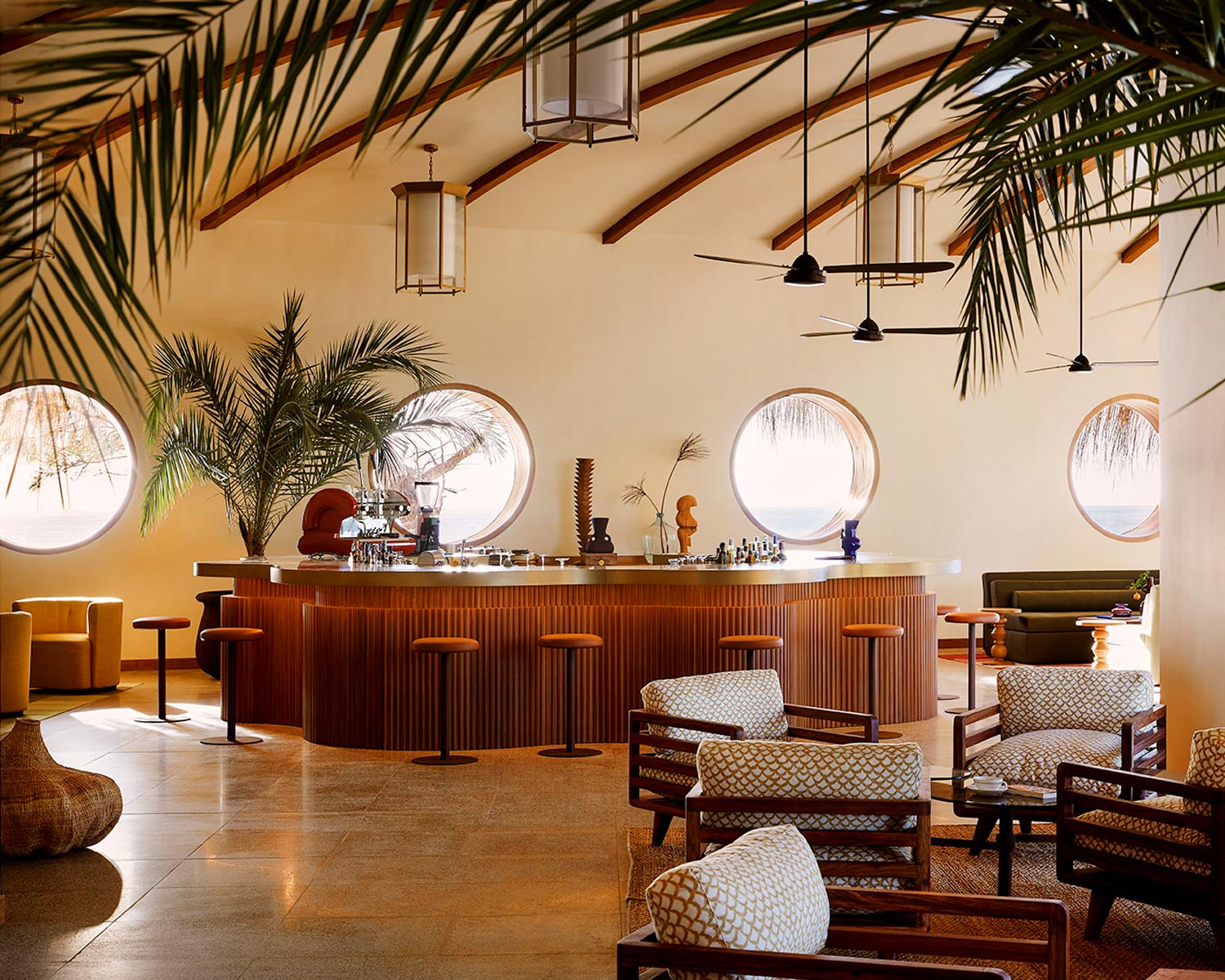
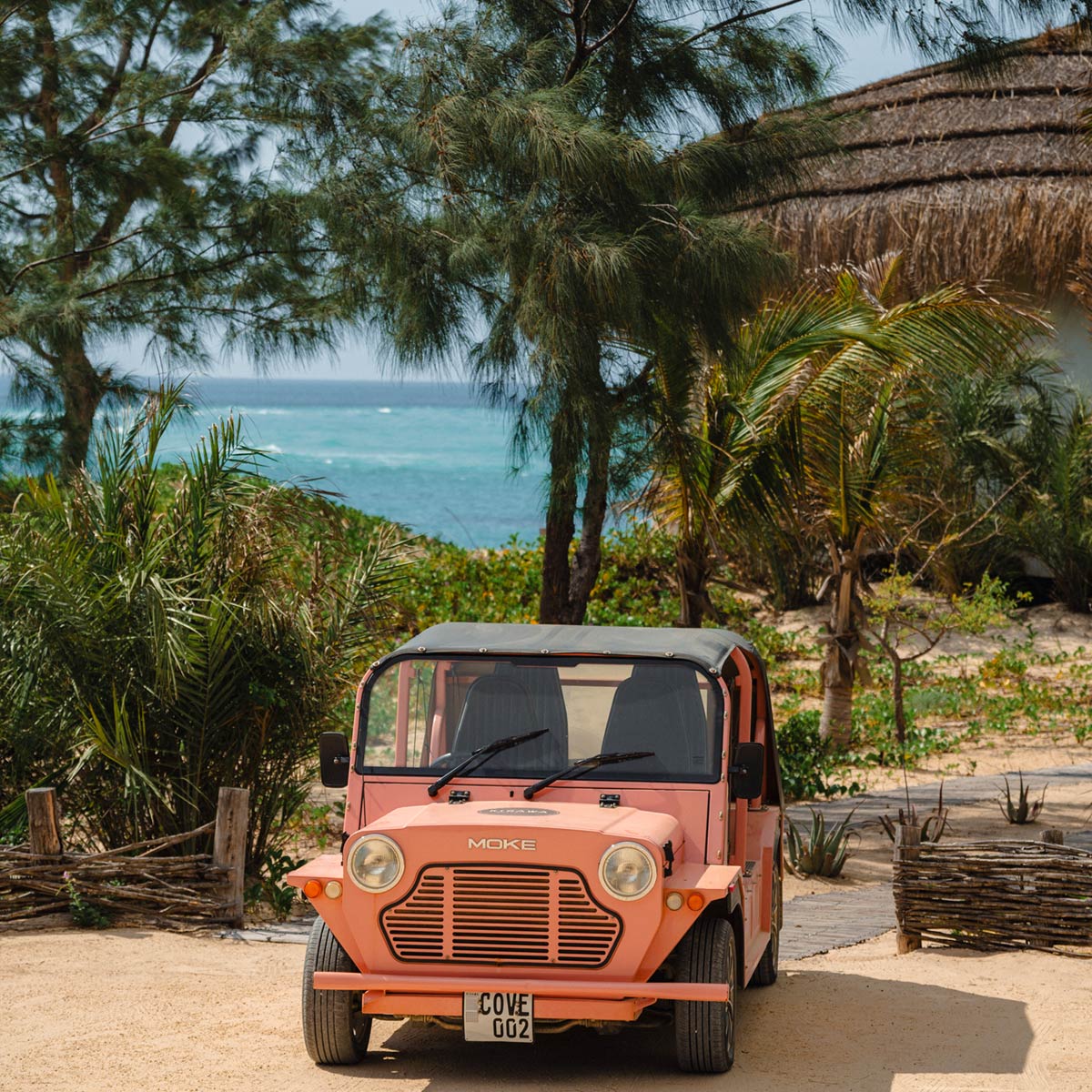
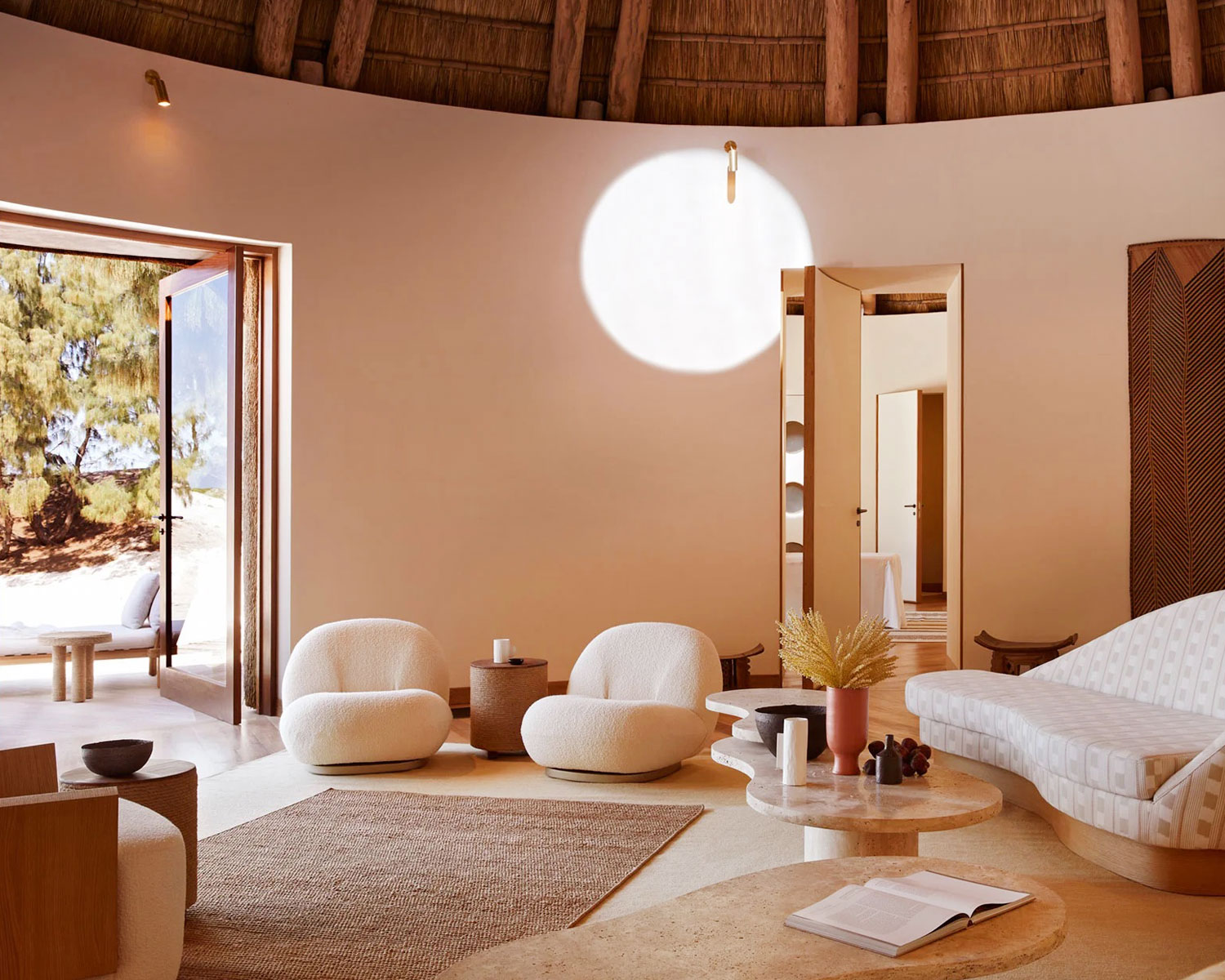

Nuts & Bolts
A bite-sized breakdown of your most frequently asked questions about Kisawa Sanctuary.
Who comes here?
Everyone who wants to (re)connect with themselves and nature. Multigenerational families, groups of friends, honeymooners, adventurers, and solo travelers looking for expeditions, relaxation, and realignment.
When’s the best time to visit?
April to November is generally the dry and cooler season. July to October is the sweet spot with sunny days and very little rain (it’s also the prime season for marine-wildlife activity with great diving and snorkeling conditions and the chance to spot the migration of humpback whales).
What else is there to do in the area?
On top of diving, snorkeling, and kite surfing, visitors can also climb the red dunes, observe crocodiles and pink flamingos, sail on a traditional fishing dhow, explore the nearby islands, kayak through the mangrove, paddle board, and embark on a helicopter safari of the archipelago.
Best room for a solo traveler? A couple? A family?
Residence 4 is for solo guests who want to write a book. Located high above the bush, it offers the sensation of being softly suspended above the leaves — and complete privacy. Residence 5 is the perfect one bedroom couple getaway — located right on the water, with a picture perfect turquoise beach and white sand outlook. Plus it’s located close to the Cove Mussassa for easy dining and deck chair lounging. Residence 7 is fantastic for families. Nestled on the calm cove side, it is a three bedroom Residence: three individual bungalows joined by interconnecting decks. It sits in the forest but touches the sand, providing beach access. It hosts a day area and two private pools, with the second sitting under a tree providing shade all day for smaller visitors.
What’s a design feature I would miss if you didn’t tell me about it?
The bathtubs have been designed to echo the undulating waves of the surrounding sand dunes, and the custom designed writing table in Residence 6 are based on the etchings of a 19th century Ghanaian presentation table.
Continued below…
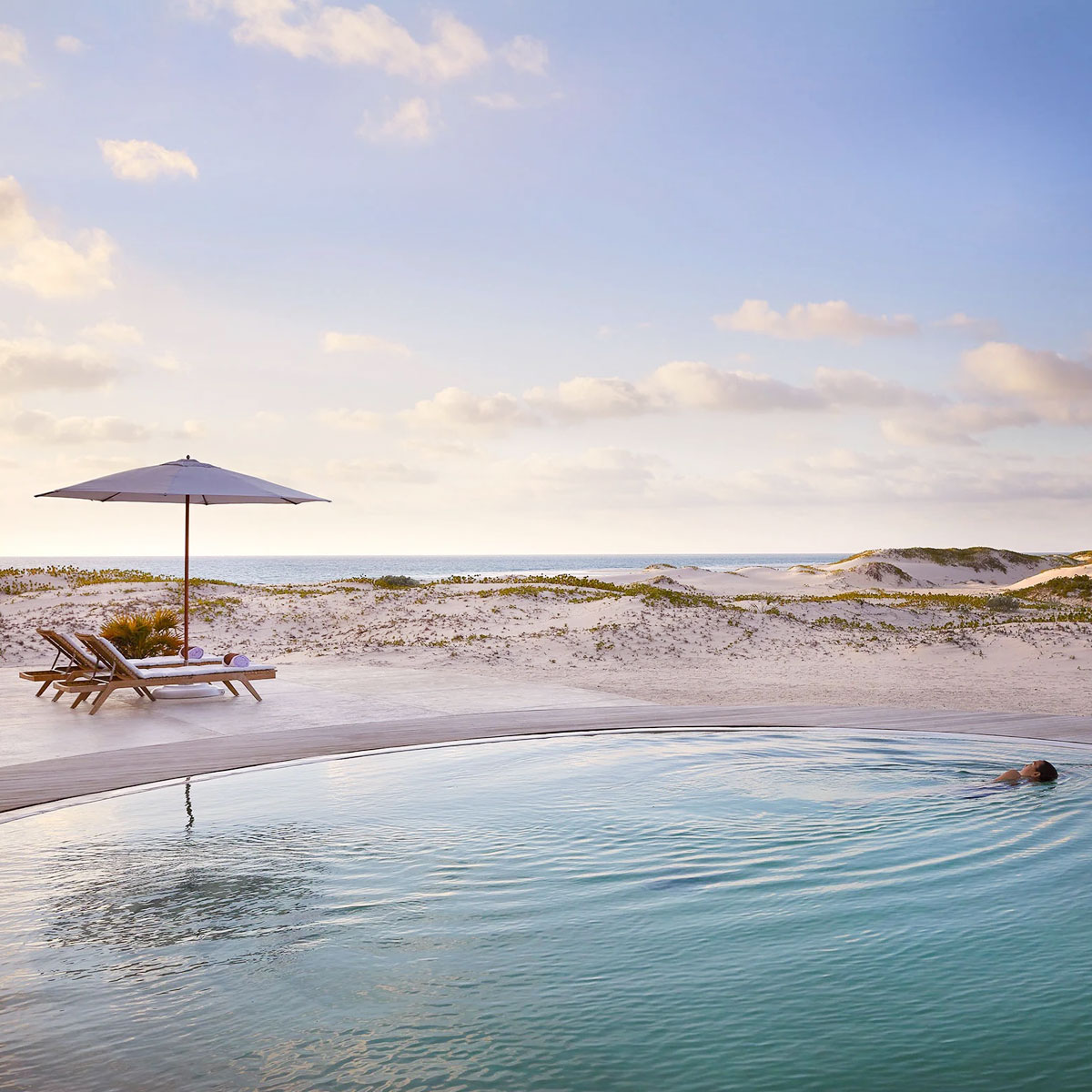
Anything to say about sustainability, equality, and community?
The Kisawa Sanctuary was entirely built following sustainable practices with local and natural materials and is now 100% solar powered. The hotel works with a network of farmers and fishermen from within the Inhambane province to supply natural, local produce. Guests are welcome to meet the community through different activities such as marine exploration, football games on the beach, or learning ancestral fishing techniques.
Are there some standout amenities you’d recommend?
The Natural Wellness Center for meditation offers personalized treatment plans based on Ayurvedic treatments and rebalancing rituals. It includes a Japanese lyashi dome sauna based on infrared technology, a 25m pool set between the dunes and the shore, and an adjacent Yoga room and gym.
Without further ado, what’s there to eat?
The hotel has four restaurants and a Pizza Tuk Tuk that enable guests to enjoy a cocktail on top of lantern lit dune, eat by the beach or in-Residence 24/7. The Cove Mussassa, currently under renovation, specializes in seafood and Mediterranean flavors while the Baracca, where guests are welcomed to come barefoot, serves Mozambican inspired dishes with sunset views. Think grilled berbere spiced fish cakes, cassava gnocchi and piri-piri and coconut infused chicken.
Tell me about Tablet Plus?
At the time of publishing, Kisawa Sanctuary offers Tablet Plus member privileges, including a room upgrade at check-in (upon availability), guaranteed late check-out, a welcome treat in your room on arrival, and a $25 EUR credit toward incidentals.
The final word?
Kisawa translates the spirit of the African safari to the marine world, and takes it all many steps further, encouraging guests to engage with the sanctuary’s scientific research as much as they do with its exceptional luxury.
Book Kisawa Sanctuary on Tablet Hotels. And/or: subscribe to our newsletter.
